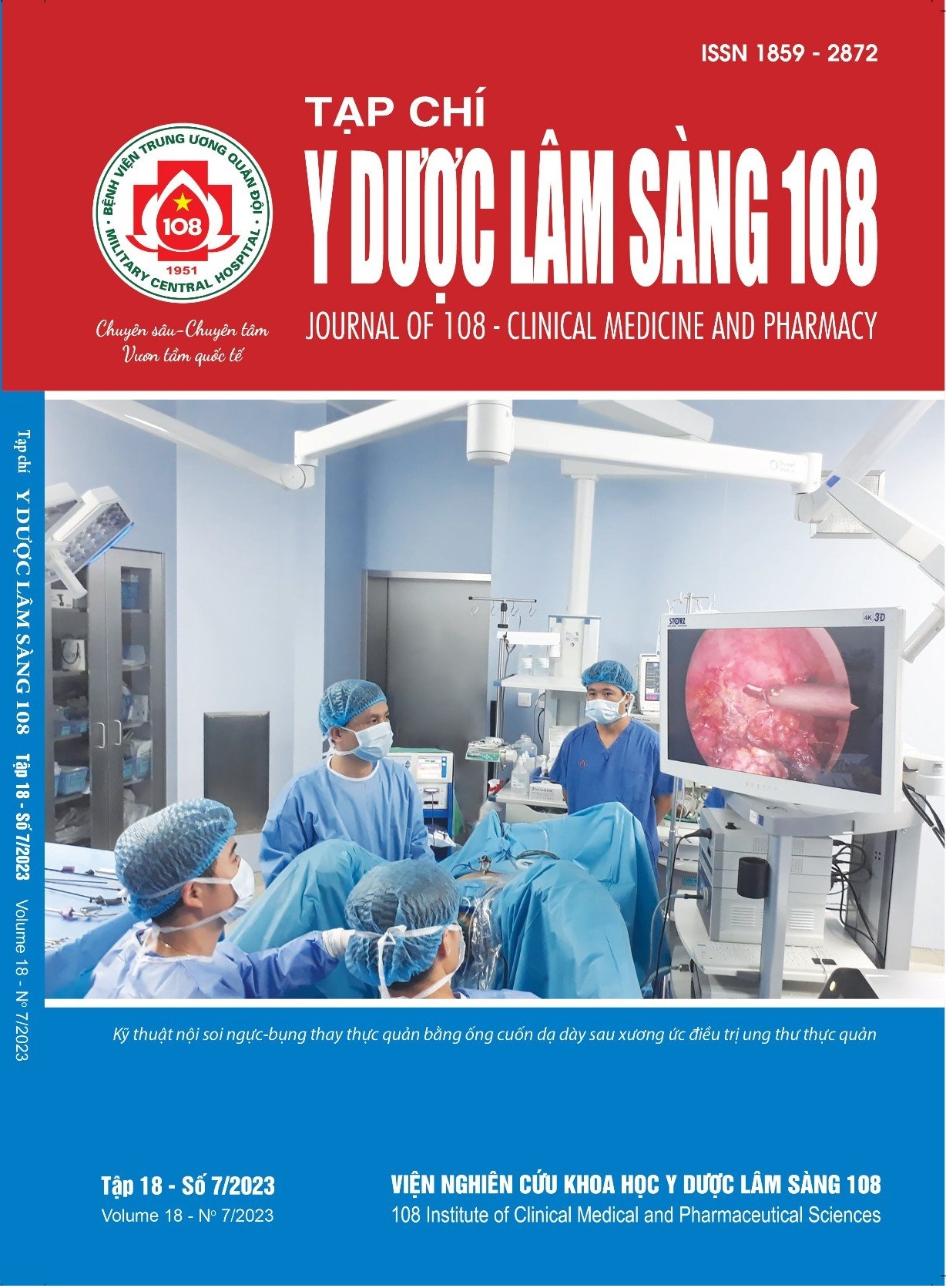Đánh giá mối liên quan giữa nồng độ hs-CRP huyết tương với một số đặc điểm của người bệnh sau ghép thận
Main Article Content
Keywords
Tóm tắt
Mục tiêu: Khảo sát mối liên quan nồng độ hs-CRP huyết tương với một số đặc điểm của người bệnh sau ghép thận. Đối tượng và phương pháp: Nghiên cứu mô tả cắt ngang trên 115 bệnh nhân sau ghép thận. Tất cả các bệnh nhân đều được định lượng nồng độ hs-CRP huyết tương và xác định mối liên quan với một số đặc điểm của người bệnh sau ghép thận: Tuổi, giới, thời gian sau ghép thận, tình trạng đái tháo đường, tăng huyết áp, chức năng thận sau ghép. Kết quả: Nồng độ hs-CRP ở mức phân tầng nguy cơ tim mạch cao và trung bình gặp ở nhóm bệnh nhân tăng huyết áp, protein niệu (+), có đái tháo đường nhiều gấp 4,537, 3,659, 8,4 lần so với nhóm bệnh nhân không có đặc điểm trên, p<0,05. Không thấy mối liên quan giữa hs-CRP với tuổi, giới, thời gian sau ghép thận, rối loạn lipid máu cũng như giảm MLCT. Kết luận: Nồng độ hs-CRP liên quan đến nhiều đặc điểm người bệnh sau ghép thận, đặc biệt là các yếu tố nguy cơ tim mạch.
Article Details
Các tài liệu tham khảo
2. Seifert ME, Yanik MV, Feig DI et al (2018) Subclinical inflammation phenotypes and long-term outcomes after pediatric kidney transplantation. Am J Transplant 18(9): 2189-2199.
3. Folkmane I, Tzivian L, Folkmane E et al (2020) Predictors of hyperuricemia after kidney transplantation: Association with graft function. Medicina (Kaunas) 56(3).
4. Swastini DA, Wiryanthini IAD, Ariastuti NLP et al (2019) Atherosclerosis prediction with high sensitivity C-Reactive protein (hs-CRP) and related risk factor in patient with dyslipidemia. Open Access Maced J Med Sci 7(22): 3887-3890.
5. Nguyễn Văn Tuấn (2015) Nghiên cứu nồng độ TGF beta1 và hs-CRP huyết thanh ở bệnh nhân bị bệnh thận mạn. Luận án Tiến sỹ Y học, Trường Đại học Y dược Huế.
6. Otsuka K, Nakanishi K, Shimada K et al (2018) Ankle-brachial index, arterial stiffness, and biomarkers in the prediction of mortality and outcomes in patients with end-stage kidney disease. Clin Cardiol 42(7): 656-662.
7. Arashnia R, Roohi-Gilani K, Karimi-Sari H et al (2015) Effect of pioglitazone therapy on high sensitive C-reactive protein and lipid profile in diabetic patients with renal transplantation; a randomize clinical trial. J Nephropathol 4(2): 48-53.
8. Tofano RJ, Barbalho SM, Bechara MD et al (2017) Hypertension, C reactive protein and metabolic profile: What is the scenario in patients undergoing arteriography? J Clin Diagn Res 11(8): 19-23.
9. Furuhashi M, Saitoh S, Shimamoto K et al (2015) Fatty Acid-Binding Protein 4 (FABP4): pathophysiological insights and potent clinical biomarker of metabolic and cardiovascular diseases. Clin Med Insights Cardiol 8(3): 23-33.
10. Han M, Lee JP, Park S et al (2017) Early onset hyperuricemia is a prognostic marker for kidney graft failure: Propensity score matching analysis in a Korean multicenter cohort. PLoS One 12(5): 0176786.
11. Roberts WL (2004) CDC/AHA Workshop on Markers of Inflammation and Cardiovascular Disease: Application to Clinical and Public Health Practice: laboratory tests available to assess inflammation--performance and standardization: a background paper. Circulation 110: 572-576.
 ISSN: 1859 - 2872
ISSN: 1859 - 2872
